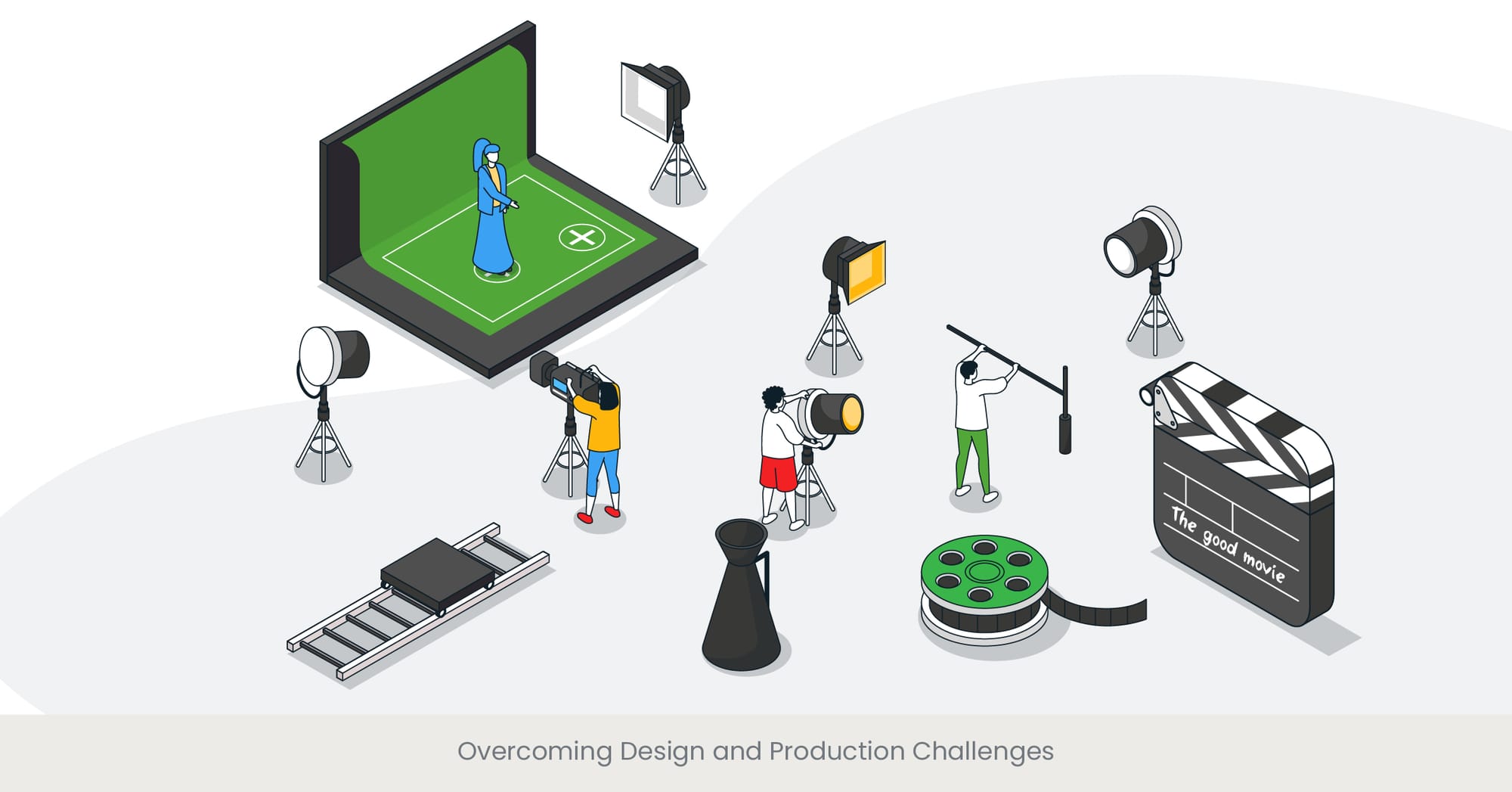
Concept to Completion: The Journey

Introduction: From Idea to Bestseller
Creating a bespoke coffee table book is a journey that begins with a simple concept and culminates in a beautifully printed volume that graces living rooms and bookstores. This process involves numerous steps, from initial ideas and brainstorming to the final printed page. Each stage requires careful planning, creativity, and attention to detail to ensure the finished product is both visually stunning and engaging for readers. Whether you're defining coffee table books or curating a theme, the journey from concept to completion is a meticulous process.
Background: The Stages of Book Creation
The journey of making a coffee table book typically starts with an idea or a theme. This initial concept is then developed into a detailed plan, including the structure of the book, the type of content, and the visual style. The process of creating bespoke coffee table books often requires extensive collaboration between designers and authors to ensure the content and design are tailored to the vision. Next, designers and authors work together to gather and curate high-quality photographs, illustrations, and text. The design phase involves creating a cohesive layout that balances text and visuals, often using software like Adobe InDesign. Creative coffee table book design ensures that the layout is visually striking and functional. Finally, the book is printed and bound, with careful consideration given to cover styles, paper quality, and binding options. Throughout this process, maintaining high image quality and consistent design is crucial.
Real-World Examples: Successful Journeys
Several award-winning coffee table book designs illustrate the successful journey from concept to completion. For example, the creation of "National Geographic: The Photographs" involved sourcing breathtaking images from the magazine’s vast archives and designing a layout that showcased these photos beautifully. Another case is "Humans of New York," which began life as a blog and evolved into a best-selling coffee table book, combining compelling stories with stunning visuals. These books exemplify how a clear concept, meticulous planning, and high-quality production can lead to success in the coffee table book market.
Before diving into the intricacies of layout design, it's important to draw inspiration from some of the best in the field. This video showcases 21 Must-Have Coffee Table Books that can significantly inspire your design process. Not only will you learn about interior design through stunning visuals, but you'll also get insights into the books that influence top designers. Whether you're in the early stages of your coffee table book project or just looking to refine your design skills, this collection is perfect for both beginners and seasoned professionals.
Take a look at the video below to explore these must-have interior design coffee table books and start collecting ideas for your next project!
References and Validation
Industry statistics and expert insights highlight the importance of each step in the coffee table book creation process. According to the Association of American Publishers, visual books like coffee table books have seen consistent sales growth due to their appeal as collector’s items and gifts. A study by Bowker also emphasizes the significance of high-quality design and production in achieving bestseller status. These findings validate the detailed, multi-step approach required to create a successful coffee table book, from initial concept to the final printed page.
Overcoming Design and Production Challenges

Introduction: Navigating the Obstacles
Creating a coffee table book involves numerous design and production challenges that require innovative solutions and meticulous attention to detail. From managing production costs to ensuring high-quality visuals, every step must be carefully planned and executed. Understanding these challenges and how to overcome them is essential for producing an award-winning coffee table book design that stands out in the market.
Background: Common Challenges in Coffee Table Book Production
Several key challenges are often encountered during the design and production of coffee table books. One major challenge is maintaining image quality throughout the production process, which involves high-resolution photos and careful editing. Another challenge is balancing production costs while achieving a high-end look, as premium materials and printing techniques can be expensive. Additionally, creating a cohesive layout that integrates text and images seamlessly requires advanced design skills and tools. Historical examples show that overcoming these challenges often requires a combination of technical expertise and creative problem-solving. For designers focused on creative coffee table book design, these challenges provide an opportunity to innovate.
Real-World Examples: Tackling Production Issues
Real-world case studies of coffee table books provide valuable insights into overcoming these challenges. For instance, the production of "The Art of Walt Disney" involved sourcing high-quality images from decades of Disney archives, requiring meticulous curation and editing. The designers had to balance production costs by choosing the right materials without compromising on the book's premium feel. Another example is "Annie Leibovitz: Portraits 2005-2016," which faced the challenge of creating a layout that allowed each photograph to shine while maintaining a cohesive overall design. These success stories in coffee table books demonstrate how strategic planning and attention to detail can overcome common production hurdles.
References and Validation
The importance of addressing design and production challenges is supported by industry research and expert recommendations. According to a report by Printing Impressions, managing production costs and ensuring high-quality outputs are critical factors in the success of printed books. Adobe’s guidelines on photo editing and layout design also emphasize the need for high-resolution images and balanced layouts to create visually appealing books. Furthermore, a survey by the Graphic Artists Guild highlights that 75% of designers believe that overcoming these challenges is key to producing successful publications. These references underscore the necessity of strategic planning and innovative solutions in the production of coffee table books.
Marketing and Promotional Tactics

Introduction: Strategies for Success
Marketing and promoting self-publishing of a coffee table book is just as important as its creation. Effective marketing strategies can significantly boost the visibility and sales of your book, turning it into a bestseller. From leveraging social media to organizing book launch events, understanding and implementing various promotional tactics can ensure that your coffee table book reaches a wide audience. Whether it’s popular coffee table book ideas or viral promotional tactics, marketing is essential to success.
Background: The Evolution of Book Marketing
The marketing landscape for books has evolved considerably over the years. Traditional methods such as book signings, print advertisements, and book reviews in newspapers have given way to digital strategies that harness the power of social media, email marketing, and online advertising. Platforms like Instagram and Pinterest are particularly effective for promoting coffee table books due to their visual nature. Additionally, influencer partnerships and online book tours have become popular ways to reach potential readers. Understanding these trends and how they apply to coffee table books is crucial for a successful marketing campaign.
Real-World Applications: Successful Marketing Campaigns
Many successful coffee table books owe their popularity to well-executed marketing campaigns. For example, the promotion of "Humans of New York" involved a strong social media presence, where the author shared stories and images from the book, engaging with a vast online audience. Similarly, "The Selby is in Your Place," a custom coffee table book by photographer Todd Selby, utilized a blog and social media platforms to build a following before the book’s release. These case studies coffee table books illustrate how effective marketing can drive sales and create a loyal fan base.
References and Validation
The impact of marketing on book sales is supported by various studies and expert opinions. According to a report by BookBub, targeted email campaigns and social media promotions can increase book sales by up to 60%. The Publishers Association emphasizes the importance of a strong online presence, noting that books with active social media marketing see significantly higher sales. Additionally, a study by the Content Marketing Institute found that visual content, such as the type used in promoting coffee table books, generates higher engagement and shares on social media platforms. These findings highlight the critical role of marketing in the success of coffee table books.
Sales Success Stories and Milestones

Introduction: Achieving Commercial Success
The journey of making a coffee table book doesn't end with its publication. Achieving commercial success is a significant milestone that validates the hard work and creativity invested in the project. Sales success stories provide valuable insights into the strategies and factors that contribute to a coffee table book becoming a bestseller. Understanding these stories helps aspiring authors and designers emulate successful practices.
Background: Key Factors in Sales Success
Several factors contribute to the commercial success of coffee table books. High-quality content, captivating visuals, and a strong narrative are fundamental. Additionally, effective marketing and distribution strategies play a crucial role. The best coffee table books often feature unique themes or high-profile contributors that attract readers. Historical data shows that collaborations with well-known brands or celebrities can significantly boost sales. For instance, fashion-themed coffee table books often leverage the popularity of the brands or designers featured.
Real-World Applications: Notable Success Stories
Several coffee table books have achieved remarkable commercial success, setting benchmarks for others in the industry. "Humans of New York" by Brandon Stanton is a prime example, selling millions of copies worldwide due to its compelling photographs and stories shared on social media. Another example is "National Geographic: The Photographs," which showcases stunning visuals from the magazine’s archives and has become a staple in many households. These success stories in coffee table books illustrate how a combination of high-quality content, effective marketing, and strategic partnerships can lead to impressive sales milestones.
References and Validation
Industry reports and expert analyses provide insights into the factors driving the sales success of coffee table books. According to a report by the Nielsen BookScan, coffee table books that leverage strong visual content and effective marketing strategies tend to perform better in sales. A study by Publishing Perspectives highlights that books featuring collaborations with celebrities or influencers see higher initial sales. Additionally, data from the Book Industry Study Group emphasizes the importance of high-quality design and production in achieving long-term sales success. These references underscore the elements that contribute to making a coffee table book a commercial success.
Audience Reception and Feedback

Introduction: Understanding Audience Impact
The success of a coffee table book is not only measured by its sales but also by how well it is received by its audience. Audience reception, review and feedback provide professional editor with invaluable insights into what resonates with readers and what aspects of the book could be improved. Positive feedback can boost the book's reputation and sales, while constructive criticism can guide future projects.
Background: The Role of Feedback in Publishing
Audience feedback has always played a crucial role in the publishing industry. Historically, authors and publishers relied on book reviews in newspapers and magazines to gauge public reception. With the advent of the internet, feedback has become more immediate and accessible through platforms like Amazon reviews, Goodreads, and social media. These platforms allow readers to share their thoughts and experiences with a wider audience, providing authors and designers with direct and diverse perspectives on their work. For coffee table books, feedback often focuses on the visual appeal, the quality of images, and the overall layout.
Real-World Applications: Leveraging Feedback for Improvement
Real-world examples show how audience feedback can influence the success of coffee table books. The "Humans of New York" series, for instance, has maintained its popularity in part due to the author’s responsiveness to reader feedback on social media pages, which helped shape subsequent editions. Similarly, feedback from on board the "National Geographic" coffee table books often highlights the stunning visuals and the compelling storytelling, which are key selling points that the publishers continue to focus on. By actively engaging with their audience, authors and designers can refine their work to better meet reader expectations and preferences.
References and Validation
Research and industry reports underscore the importance of audience feedback in the publishing process. A study by the Pew Research Center found that 70% of readers consult online reviews before purchasing a book, indicating the significant influence of public opinion. According to a report by the Book Industry Study Group, books that receive high ratings and positive reviews on platforms like Amazon and Goodreads see a considerable boost in sales. Additionally, the importance of visual appeal in coffee table books is highlighted by a survey from Printing Impressions, which found that 65% of buyers consider image quality and layout as primary factors in their purchasing decisions. These findings highlight the critical role of audience reception and feedback in the success of coffee table books.
Awards and Recognitions

Introduction: The Prestige of Awards
Awards and recognitions are essential for the publishing world, particularly for bespoke coffee table books. Winning prestigious awards elevates a coffee table book's profile, boosting the credibility of both the creators and the design itself. An award-winning coffee table book design can significantly increase market appeal, draw a larger audience, and drive higher sales. When a coffee table book is recognized by industry experts, its overall visibility improves, making it a more attractive choice for collectors and readers.
Background: Importance of Awards in Publishing
Awards have long been a benchmark of excellence in publishing, particularly for creative coffee table book designs. These accolades are given for outstanding work in photography, design, and content. Prestigious awards such as the Independent Publisher Book Awards (IPPY) and the American Institute of Graphic Arts (AIGA) Book Design Awards have become symbols of excellence in the field of coffee table books. For those looking to produce bespoke coffee table books, earning such awards can bring significant publicity, enhance the reputation of the book, and help it stand out in a competitive market.
Real-World Applications: Celebrated Coffee Table Books
A number of coffee table books have gained worldwide acclaim through these awards. Sebastião Salgado's "Genesis" is a notable example, winning multiple awards for its stunning black and white nature photography. This recognition greatly contributed to the book's widespread success and global reach. Likewise, "Annie Leibovitz at Work" received accolades for its unique cover design and insightful content, further proving that an award-winning coffee table book design can boost both reputation and sales. These celebrated coffee table books underscore the importance of design, content, and the impact of awards on their success.
References and Validation
According to the Book Industry Study Group, award-winning coffee table books often see a significant increase in sales—sometimes up to 40%. The Independent Publisher reports that winning a prestigious award not only enhances media coverage but also opens doors to broader retail visibility. Additionally, AIGA's recognition of book design helps set industry standards, fostering a culture of creativity and excellence. The impact of awards and recognitions on bespoke coffee table books is undeniable, as they help establish credibility and attract a wider audience.
Collaborations Behind the Scenes

Introduction: The Power of Creative Collaborations
Successful coffee table books are often the result of strong collaborations between authors, photographers, designers, editors, and other creatives. These collaborations allow for the blending of diverse talents, creating a more compelling and high-quality final product. The process of designing a creative coffee table book often requires a cohesive effort to integrate both visuals and text in a seamless manner. Whether through a bespoke coffee table book design or a more traditional approach, collaboration plays a key role in producing works that are both engaging and visually stunning.
Background: The Importance of Collaborative Efforts
Collaboration has been the cornerstone of many successful publishing projects, particularly for popular coffee table book ideas. By bringing together various experts, the design and content of a coffee table book can be elevated to new heights. The integration of design, photography, and text requires effective communication and creative input from every member of the team. Historically, some of the best coffee table books have emerged from such partnerships, with each team member contributing to the overall vision.
Real-World Applications: Successful Collaborations
"National Geographic: The Photographs" exemplifies how collaboration can lead to an exceptional coffee table book. This series benefited from the expertise of renowned photographers, skilled editors, and experienced designers, all of whom worked together to create a visually captivating book. Another example is Brandon Stanton's "Humans of New York," a global sensation that succeeded through collaboration with individuals sharing their personal stories and photographs. These examples demonstrate how collaboration enhances the quality of bespoke coffee table books, resulting in a final product that resonates with readers.
References and Validation
Industry research consistently highlights the value of collaboration in the creation of coffee table books. A report by the Association of American Publishers found that books created through collaborative efforts are more likely to achieve critical acclaim and high sales. Adobe's Creative Team emphasizes that collaboration fosters innovation and results in higher-quality creative work. These insights support the importance of creative collaboration in the development of successful coffee table books, reinforcing the notion that collaboration is essential to producing top-tier content.
Collaborations are at the heart of great coffee table books. Want to see how expert collaborations bring award-winning designs to life? Dive deeper with our case studies and see how we elevate projects.
Post-Publication Opportunities

Introduction: Expanding Horizons After Publication
The journey of a coffee table book doesn't end at its publication; post-publication opportunities are crucial in extending its reach and maximizing its impact. Whether through media features, exhibitions, or social media campaigns, leveraging these opportunities is vital for ensuring a coffee table book remains relevant long after its release. For creators, these opportunities provide a chance to further promote their work and engage with a wider audience, turning a one-time success into a lasting legacy.
Background: The Lifecycle Beyond Publication
Once a coffee table book is launched, various post-publication strategies can enhance its success. Engaging in media campaigns, hosting exhibitions, or securing press coverage can significantly increase a book’s visibility. Authors and designers who plan their post-publication efforts carefully are more likely to maintain interest in their coffee table books and sustain sales. Social media campaigns, collaborations with influencers, and book tours also contribute to keeping the book in the public eye.
Real-World Applications: Maximizing Post-Publication Success
"Humans of New York" and "The Art of Disney" are both excellent examples of books that have maximized post-publication opportunities. "Humans of New York" used social media and media appearances to keep its momentum going, while "The Art of Disney" found success by being featured in exhibitions and art galleries. These case studies highlight how post-publication efforts can continue to drive both visibility and sales for coffee table books.
References and Validation
Research shows that post-publication activities play a significant role in the continued success of coffee table books. The Independent Book Publishers Association reports that books engaging in post-launch marketing strategies see higher long-term sales. Additionally, studies by Nielsen BookScan and the Book Industry Study Group demonstrate that books showcased in media outlets or exhibitions experience noticeable boosts in visibility and sales. These references underline the value of continuing to promote a coffee table book after its release.
Post-publication strategies are crucial to maintain your book’s relevance. Want to learn how to keep your coffee table book in the spotlight? Read our blog for more marketing tips and strategies.
The Impact on Authors and Creators

Introduction: Personal and Professional Growth
For authors and creators, the process of creating a coffee table book offers invaluable personal and professional growth. From conceptualization to execution, authors often learn significant lessons that enhance their skills and expertise. Moreover, publishing a successful coffee table book can open doors to new opportunities, raise their profile, and provide a sense of achievement.
Background: Professional Milestones and Personal Achievements
Publishing a coffee table book is often a career milestone that signals creative and professional success. Many authors and designers who have published successful coffee table books report an increase in recognition and professional opportunities. For instance, photographers who publish coffee table books often gain wider recognition in their industry, while designers receive more high-profile projects and collaborations. The success of a coffee table book can serve as a powerful testament to the creator's abilities.
Real-World Applications: Success Stories and Personal Gains
Brandon Stanton's "Humans of New York" is a prime example of how publishing a coffee table book can significantly enhance an individual's career. Stanton's success story highlights the power of creative coffee table book design and storytelling in building an enduring global brand. Similarly, Annie Leibovitz's coffee table books have solidified her position as one of the most influential photographers in the world, further proving how such projects can elevate one's professional stature.
References and Validation
Industry research supports the idea that creating a coffee table book can lead to career advancements for authors and creators. A study by the Author's Guild found that 70% of authors who published coffee table books reported an increase in professional opportunities. Additionally, insights from the Independent Book Publishers Association suggest that a successful coffee table book can lead to more collaborations and publishing opportunities for its creator. These references validate the impact that publishing a coffee table book can have on both personal and professional growth.
Your coffee table book could transform your career. Learn how our expertise helped other authors and designers gain recognition and professional opportunities.
Lessons Learned and Best Practices

Introduction: Gaining Insights from Experience
Creating a coffee table book is a rewarding but challenging process. Each stage—from concept development to post-publication promotion—offers valuable lessons that can benefit future projects. Understanding what works and what doesn’t can help authors and designers optimize their approach to create a more impactful book.
Background: Learning from the Process
As with any creative project, creating a coffee table book involves learning through experience. Whether it’s refining the book’s theme, gathering engaging content, or designing a cohesive layout, each step provides opportunities for improvement. Historical coffee table books that achieved significant success often did so by applying lessons learned from past projects.
Real-World Applications: Success Stories and Practical Tips
"Humans of New York" and Sebastião Salgado's "Genesis" offer great lessons in storytelling and design. Stanton’s success was due to his engagement with the audience on social media, while Salgado's meticulous attention to detail and high-quality visuals were pivotal in ensuring the book's success. These examples highlight how practical insights and strategies contribute to a coffee table book’s success.
References and Validation
Reports from the Book Industry Study Group and the Independent Publisher emphasize the importance of learning from past experiences to improve future projects. Adhering to best practices and staying informed on industry trends can significantly improve the creative process and result in better-quality coffee table books. These insights prove that learning and adapting are essential for long-term success in the publishing industry.
Building a successful coffee table book requires experience and continuous learning. Interested in more tips from successful projects?
Check out our guides for deeper insights into creating stunning books.
FAQs
1. What kind of books do you put on a coffee table?
Coffee table books are typically large, visually appealing books that serve as great conversation starters too. They often focus on topics such as art, photography graphic design, fashion, travel, and nature.
2. What's the point of coffee table books?
The main purpose of coffee table books is to provide aesthetic pleasure and serve as conversation pieces. They are designed to be both informative and visually engaging, enhancing the décor of a living space for special occasions.
3. What is the criteria for a coffee table book?
A coffee table book should have high-quality images, a compelling theme, and a visually appealing layout. It should be large enough to be displayed prominently and durable enough to withstand frequent handling.
4. Do people still use coffee table books?
Yes, coffee table books remain popular as decorative items and gifts. They are appreciated for their visual appeal and ability to showcase beautiful photography and art.
5. What makes a great coffee table book?
A great coffee table book features stunning visuals, a cohesive story theme, high-quality printing, and engaging content. It should captivate the reader and be a beautiful object in its own right.
6. What do you write in a coffee table book?
A coffee table book photo also typically includes a mix of high-quality photographs or black and white photography with accompanying text that provides context and background information. The text should be concise and enhance the visual experience.
7. How many coffee table books should you have?
The number of coffee table books you should have depends on how many pages, your personal preference and available space. A small blocks well-curated collection of a few high-quality books is often more impactful than a large quantity.
8. What can I do with a lot of coffee table books?
With a lot of coffee table books, you can rotate them to keep your living space looking fresh. You can also use them as many photos to easily create a decorative stacks, display them in bookcases, or gift them to friends and family.
9. What are the benefits of coffee table books?
Coffee table books offer aesthetic value, provide entertainment and education, and serve as excellent conversation starters. They can also enhance the décor of any room and reflect personal interests of family member.
10. What makes a great coffee table book?
Great coffee table books feature high-quality images, a well-organized layout, and engaging content. They should be visually appealing and provide an immersive experience that captivates the reader.



%20(1).jpg)
%20(1).jpg)


